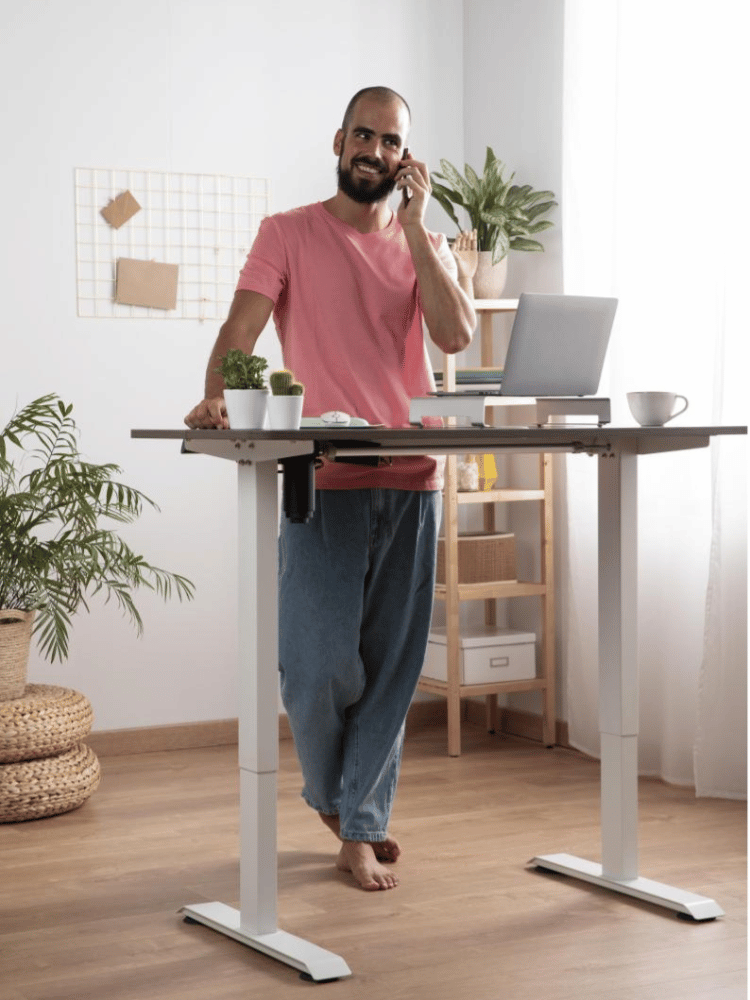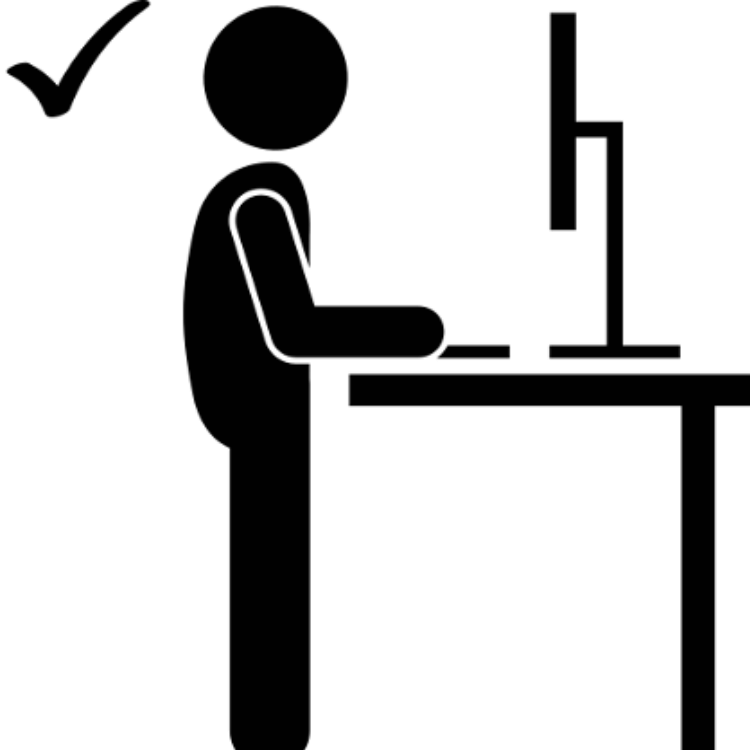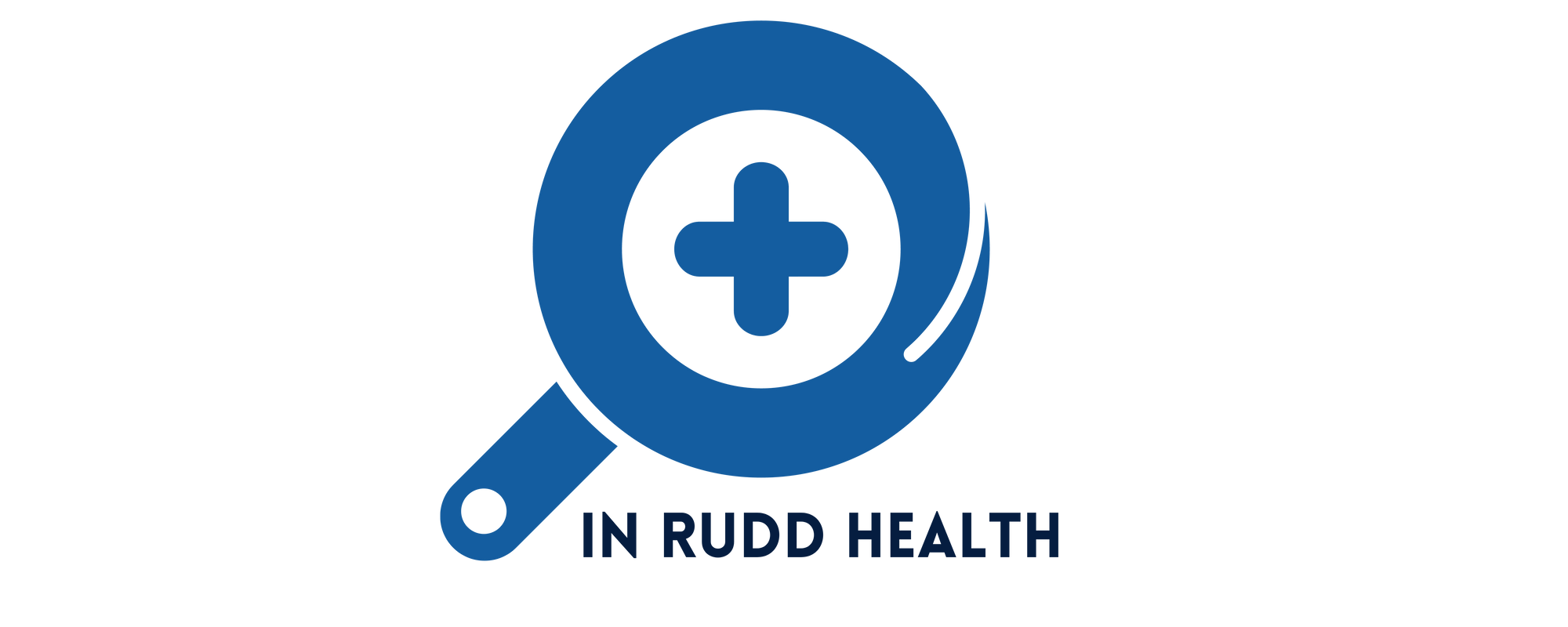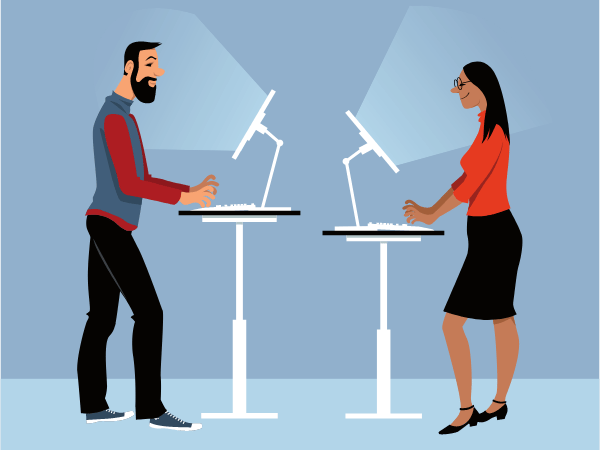
Welcome to the transformative world of "How To Use A Standing Desk." This all-inclusive guide will delve into the diverse benefits of using a standing desk, explore considerations like ergonomic setup and movement integration, and address whether standing is better than sitting. By the end of this article, you will be provided with the knowledge and strategies needed to effectively assimilate a standing desk into your work routine.
The standing desk has emerged as a game-changer in a world where workspaces are evolving. Our article is designed to equip you with the knowledge and skills to embrace this shift effectively. From creating an ergonomic setup to incorporating movement into your day, we'll walk you through the essentials of using a standing desk. Whether you're seeking improved posture, enhanced energy levels, or increased focus, this guide has you covered. Join us as we navigate the terrain of standing desks, ensuring you make the most of this dynamic approach to work and well-being.
The Power of Proper Setup: Creating Your Ergonomic Oasis
Setting up your standing desk for optimal comfort and productivity requires attention to detail. Begin by adjusting the height of your desk to ensure your elbows are at a 90-degree angle while typing. This position alleviates strain on your wrists and shoulders. Set your computer monitor at eye level to maintain optimal spinal posture. This simple adjustment prevents the dreaded "tech neck," often accompanying long hours of screen time.
Additionally, consider investing in an anti-fatigue mat. This specialized mat provides cushioning and support for your feet, reducing pressure and enhancing circulation. With your workspace expertly arranged, you're ready to unlock the potential of your standing desk.
The Art of Posture: Stand Tall, Stand Right
While standing might conjure images of a relaxed posture, mastering the art of standing correctly is pivotal. Begin by imagining a string gently pulling the crown of your head toward the ceiling. Align your head, neck, shoulders, and hips to create a balanced, neutral position. Engaging your core muscles offers the added benefit of preventing slouching. Distribute your weight evenly between both feet, ensuring your knees remain soft, not locked.
Remember, the key to ergonomic success lies in dynamic posture. Slight adjustments and movements keep your muscles engaged and circulation flowing, eliminating the discomfort that prolonged static standing can bring.
The Dance of Sitting and Standing: Finding Your Rhythm
One of the most common misconceptions about standing desks is that they necessitate endless hours of upright work. However, the real secret lies in the balance between sitting and standing. While standing benefits, prolonged periods can strain your legs and lower back. Begin with short intervals of standing, gradually extending the time as your body acclimates.
The key is to listen to your body. Intuition will guide you toward finding the rhythm that suits your needs. Consider adopting a standing routine for 20-30 minutes every hour, interspersed with seated breaks. This approach optimizes circulation, mitigates fatigue, and keeps your energy levels consistent throughout the day.
Movement Matters: Breathe Life into Your Workstation
A standing desk's true magic comes alive when movement enters the equation. While standing, incorporate gentle stretches and shifts in weight to prevent stiffness. Rock from heel to toe, perform calf raises, or rotate your ankles to invigorate your muscles. These small actions keep your body engaged and discourage the sedentary habits that have become all too common in modern work environments.
Embrace micro-movement power: swaying side to side, performing wrist circles, or simply marching in place. These subtle actions stimulate blood flow, nourish muscles, and enhance focus by keeping your mind and body in sync.
Setting Up Your Standing Desk Ergonomically

Creating an ergonomic setup for your desk is pivotal to ensuring comfort and productivity. Here's how to ensure a proper form:
Optimal Monitor Placement
Position your monitor at eye level to prevent neck strain, ensuring your gaze remains level. An adjustable monitor stand can help achieve this alignment using a standing desk.
Keyboard and Mouse Ergonomics
Maintain your keyboard and mouse at elbow height, keeping your wrists straight and parallel to the floor. This ergonomic alignment prevents wrist strain and encourages natural movement.
Adjustable Desk Height
Customize the height of your standing desk to achieve approximately 90-degree angles at your elbows and wrists. This adjustment is crucial for maintaining a comfortable posture.
Incorporate Anti-Fatigue Matting
Consider using an anti-fatigue mat to alleviate pressure on your feet and enhance standing comfort. The carpet provides cushioning and encourages subtle movements that improve circulation.
Avoiding Pitfalls: Navigating Common Mistakes
As you embark on your standing desk journey, it's crucial to sidestep common pitfalls. Resist the urge to lock your knees, as this can lead to discomfort. Similarly, avoid leaning excessively on the desk, as it compromises posture and can cause strain. A monitor placed too high or low can prompt awkward neck positions, so ensure your gaze falls at the top third of the screen, directly in your line of sight.
Listening to Your Body: Your Ultimate Guide
In this journey towards ergonomic enlightenment, your body's feedback is your most potent tool. If you experience discomfort or fatigue, it's a signal to shift your approach. Remember that every individual is unique, and the key to success lies in personalization. If standing becomes taxing, transition to a seated position or incorporate a stool to ease the burden on your legs.
Incorporating Movement and Stretching

Movement is vital even when using a standing desk; here's how to keep your body engaged:
Scheduled Shifts: Rotate between sitting and standing in intervals, aiming for approximately 30 minutes of standing each hour. Implementing a timer or scheduling reminders can help you adhere to this routine.
Dynamic Stretches: Incorporate simple stretches like calf raises, lateral bends, and shoulder rotations to combat stiffness and enhance stretching at work. These stretches can be performed discreetly and contribute to overall comfort.
Foot Rocker Utilization: A foot rocker beneath your desk facilitates calf muscle stretching and improves circulation. The gentle rocking motion encourages blood flow and can alleviate discomfort associated with prolonged standing.
Active Seating Alternatives: Experiment with active seating options or balance boards to engage core muscles while using a standing desk; these alternatives offer a dynamic experience that can improve posture and prevent fatigue.
Balancing Sitting and Standing
Finding an equilibrium between sitting and standing is pivotal:
Listen to Your Body:
Tune into your body's signals. If fatigue sets in, don't hesitate to take a seated break. How often you should stand up from your desk depends on your comfort level, but aiming for regular intervals is recommended.
Regular Alternation:
Strive to balance sitting and standing throughout the day, minimizing strain and promoting comfort. Remember that an ergonomic setup for your desk extends to sitting and standing positions.
Explore Seating Variants:
Introducing a stool or perch can offer relief without compromising an active posture. An ergonomic or standing desk chair provides support during seated intervals while maintaining comfort.
Benefits of Using a Standing Desk
The advantages of utilizing a standing desk are manifold, spanning health, posture, and overall well-being. The height of a standing desk is conducive to the following:
Improved Posture and Reduced Strain:
A standing desk can promote a more natural spine alignment, minimizing strain on the neck, shoulders, and back. Poor posture can contribute to discomfort, so a standing desk offers an opportunity to maintain proper alignment.
Enhanced Blood Circulation:
Standing encourages better blood flow, which reduces the risk of cardiovascular issues and supports overall heart health—standing prompts muscles to engage, aiding blood circulation throughout the body.
Caloric Expenditure:
Although not a substitute for vigorous exercise, standing burns more calories than sitting, contributing to weight management. Taking subtle movements while standing, like shifting your weight or performing standing desk exercises, can increase calorie expenditure.
Elevated Energy and Alertness:
Increased blood circulation can lead to heightened energy levels and improved mental alertness during work hours. Alternating between sitting and standing can help prevent the midday energy slump that often accompanies prolonged sitting.
Mitigation of Health Risks:
Prolonged sitting has been associated with health risks like obesity and diabetes; a standing desk can help mitigate these risks. The simple act of standing encourages more physical engagement and can contribute to reduced health risks associated with sedentary behavior.
Conclusion: The Standing Desk Revolution
Effectively using a standing desk extends beyond simply standing; it involves optimal setup, strategic movement, and a balanced approach to sitting and standing.
By paying attention to the suggestions in this article, you can harness the multifaceted benefits of a standing desk, including improved posture, heightened energy levels, and reduced health risks. Embrace standing as a dynamic component of your work routine, whether in a traditional or remote office. Doing so will pave the way for a healthier, more productive lifestyle. So, whether you're exploring wirecutter desk options or considering the Varidesk setup, remember that an investment in your well-being and productivity awaits when you choose to stand.


